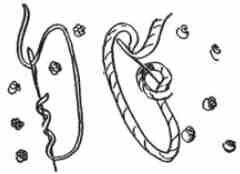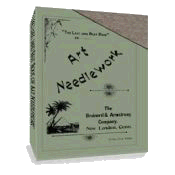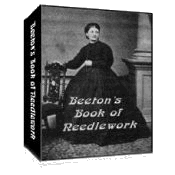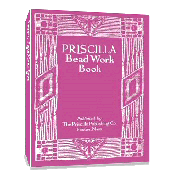[]Subscribe To This Site
The French Knot – A Small but Important Stitch
The French Knot stitch has the merit of great antiquity, appearing in early ecclesiastical embroideries to represent the hair of “men and angels,” as well as in elaborate landscape specimens of the time of James I, when it came into play for the foliage of trees and shrubs; also, in some ancient Chinese embroidery executed entirely in knots skillfully disposed.

Click on picture to see more detail.
Today this stitch is often used in embroidery for filling center of flowers, for underlaying raised work, for golden rod, thistles and cat-tails, on wash goods and also in initials. It requires to be worked with a thick and not a thin thread, purse silk, filloselle, or crewel being the materials with which it is usually made. As it is such an important stitch in embroidery it should be thoroughly and carefully practiced.

Click on picture to see more detail.
The illustration above shows the mode of working it. Upon viewing the illustration, the following instructions will be readily understood:
Bring the needle to the surface of the material from the wrong side; bring it up in the exact spot where the knot is to be when finished. Take the needle in the right hand, hold the thread firmly in the left in a straight line from you, then twist the thread around the needle three times, now put the needle down exactly through the place where it was brought up, still keeping hold of the thread in left hand until all the slack thread has been drawn through, then release the thread and pull through with the right hand simultaneously. This completes the knot, which should present a compact and smooth appearance.
The French Knot may be added to other stitches for decorative effect. Below is a simple pattern using this stitch and the Feather Stitch. With a little imagination, it is easy to see the useful of this knot to add variety to almost any other embroidery stitch.

Click on picture to see more detail.
Return to top of French Knot Stitch page.
Return to Embroidery Stitches page.
Return to Home page.



 433 pages!
433 pages!

